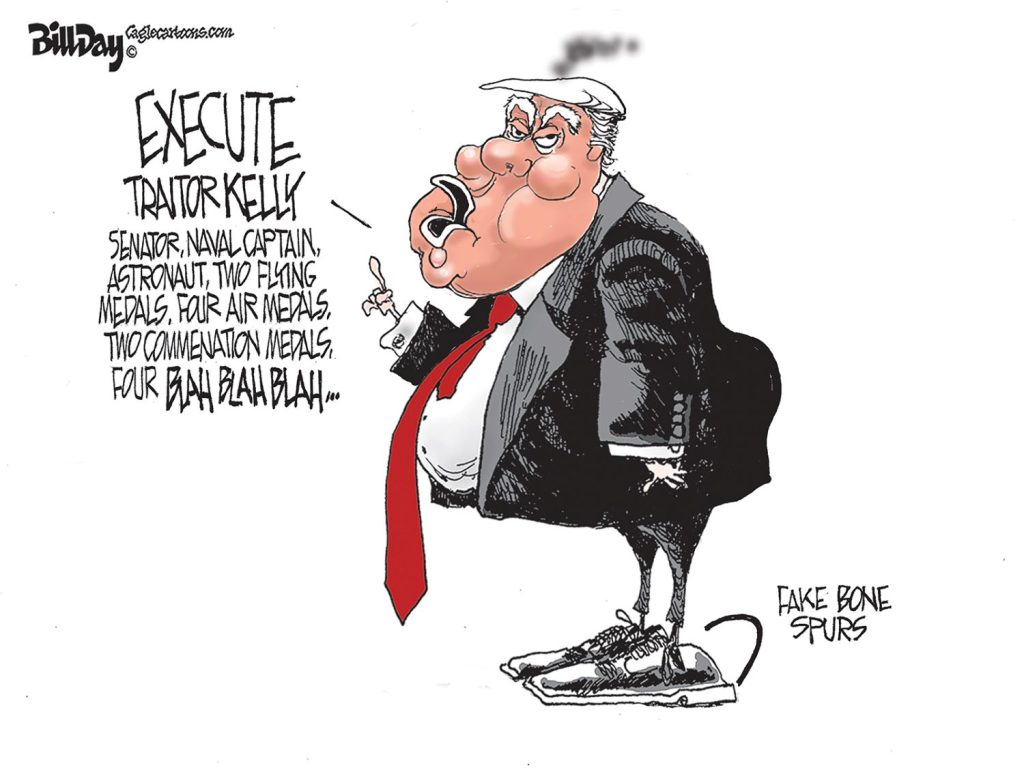It’s often said, particularly in the midst of budget deliberations, that Memphis simply has too many parks.
It’s another one of those myths about Memphis that gets repeated when the facts show conclusively that Memphis lags behind the national average in every park category.
Even including 3,200 acres at Shelby Farms Park, only 4.8% of Memphis’ land area is parkland. The median for 100 major cities is 8.3%. Nashville stands at 9.3%.
In our last post, we referred to the deepening problem of underfunded city services and we highlighted parks as a prime example. On a per capita basis, Memphians spend $38 in operating funds and $4 for capital costs for their city parks. Nashville spends $49 and $13 respectively.
The average for 100 major U.S. cities is $63 in operating funds and $17 in capital spending. In other words, the average operating spending for all cities is 66% higher than Memphis and capital spending is 425% higher.
Ranking Low
Among the 50 most populated cities, Memphis ranks #44 in the percent of the city residents within a half mile walk to a park at 39.6%. Atlanta is right in the middle of the rankings and 64% of its residents are within walkable access of a park, so just to get to the middle, Memphis would need to up its game 60%.
Memphis’ poor rankings harken back to its #42 ranking among the 50 best park systems in June of last year by The Trust for Public Land’s ParkScore. The information and rankings in this post come from the recently released City Park Facts by The Trust for Public Land, whose director of Center for City Park Excellence Peter Harnik oversee the production of this seminal compendium of information.
“Data is knowledge and knowledge is power,” the report said. “Over the past decade, the city parks movement has gained tremendous power, and one reason is the dramatic increase in the amount of information available about almost every aspect of urban park and recreation systems.”
Looking back, it’s hard to believe seven years have passed since the February 8th when more than 1,000 people stunned organizers – not to mention the city and county’s elected leaders – by showing up at Memphis Botanic Gardens to kick off the “Greening Greater Memphis” movement and to hear parks expert Alex Garvin and urbanist Carol Coletta talk about how the “concept of connecting neighborhoods through parks and greenways provides more than just fun and games. It presents proven economic, health and social benefits that make cities stronger and more livable.”
We’ve Come A Long Way
The climax of the evening was when hundreds of people signed a declaration of support for Memphis “to be known nationally as a leader for distinctive parks, greenways and natural landscapes.”
We’ve come a long way in transforming the aspirations of that evening into the reality of progress on the four foundational programs – the Greater Memphis Greenline, the Wolf River Greenway, Shelby Farms Park, and the Memphis Riverfront – and since then, Overton Park Conservancy has been added.
What remains to be addressed are the neighborhood parks that should be the backbone of connected green assets for Memphis.
Unfortunately, Memphis’ park budget has been stagnant for 20 years, and these days, it is moving in the wrong direction. If city parks were funded at the average of the 100 largest cities, its budget would be $50 million instead of the one-fourth of that it is today.
It’s enough to summon up warm memories by some people for the Memphis Parks Commission. Before it was eliminated in a squabble with Memphis Mayor Willie W. Herenton, it ensured that advocates for quality parks and recreational programming had a strong voice in the budgeting debate. Eventually City Council joined Mr. Herenton in abolishing the Park Commission, and as a result, there is essentially no one today to lobby for more money, to talk to the media about the needs of our parks, and to elevate park problems to a priority in City Hall.
Memories
The days when Memphis parks and recreation department was held up as one of the best in the U.S. are distant memories. Today, many ballfields are in dismal shape, there is no standard for what equipment – if any – should be in neighborhood parks (much less what condition it should be in), and the maintenance levels are lagging.
It’s really no surprise since Memphis has only 3.1 regular employees per 10,000 residents, compared to the national median of 5.3 and that Memphis is not even near the top 10 in ball diamonds, playgrounds, dog parks, basketball hoops, skateboard parks, recreation and senior centers, swimming pools, disc golf courses, nature centers, or tennis courts.
Memphis and Shelby County have created – and continue to create – green assets that are setting – or have the potential to set – national standards. Separate, they are just isolated projects and plans, but together, they have become a “green strategy” that is all about place-making. It’s not about projects any longer, but about vision. It’s about visualizing the big picture, rather than isolated parts. It’s about sending a national message about being progressive and bold.
Memphis has done it before. A century ago.
History Repeats Itself
According to the Tennessee Encyclopedia of History and Culture, “The Memphis Park and Parkway system resulted from the vision of new civic capitalists who emerged in the wake of the yellow fever epidemics of the 1870s. In 1895, these well-educated, well-traveled, and prosperous capitalists established the Greater Memphis Movement (GMM), a loose organization devoted to the promotion of a progressive civic agenda that included…construction of a system of parks and connecting boulevards to unite the new city with the old.”
The history invokes the revered name of Olmstead, but here, it was John Olmstead, son of the world-famous Frederick Law Olmstead Sr., landscape architect for Central Park in New York City and Biltmore in Asheville. His son, John Olmstead, designed an alignment of a proposed parkway in Memphis to connect two park sites, one on Riverside (Cow Island) and another on an old farm tract known as Lea’s Woods. The Wilderberger Farm on Cow Island Road became Riverside Park and Lea’s Woods became Overton Park. In addition, Memphis redesigned and developed three of the four original 1819 city public squares, the design of new small urban parks, and the design of a parkway that would connect these parks and spur development.
Because of today’s momentum, it seems like we are witnesses to a contemporary revival of the city parks movement that made Memphis nationally known in the late 19th century. Memphis is on the verge and has already made impressive progress in doing it again. But to be completely successful, plans have to include the parks that are most accessible to most Memphians – neighborhood parks.






I would think that comparing parks with total area size and even closeness to residents is inaccurate. When you consider that Memphis population is less dense than most cities, it shows the flaws in using that metric. Instead should be a comparison of park acreage to total city population.
We think the facts are the facts regardless of the cause and effect. But among cities classified as less dense, Memphis still is below the median.
One reason Memphis hasn’t kept pace is because (as we were mentioning in the last post) in 1970, before the city doubled its size through annexations, Memphis had facilities and parks that made sense for the city that existed then, but as the city expanded, it never made a similar commitment to the number of parks that were truly needed in the larger city.
Anon 8:51-
It is not an issue of density. Proximity is everything when it comes to parks and their location. One large park in a remote section of the city will provide little in the way of benefits to the average resident. The issue is the number of residents that have easy access to improved public open spaces.
Yes, Anon 8:51, density is a factor that needs to be considered, but there are quite a few un-dense cities that have higher-scoring park systems than Memphis, including Wichita, Tucson, Fort Worth, Colorado Springs and Aurora. Perhaps most noteworthy is Kansas City, Mo. which scores considerably higher than Memphis and is actually even less dense by population. Kansas City, another “Big River Town,” would be an excellent site for a study field trip for Memphis park advocates.
Excellent article, Tom.
Thanks, Peter.
Peter is director of The Trust for Public Land’s Center for City Park Excellence, and if you care about parks, you have probably already read some of his books, the latest of which is Urban Green: Innovative Parks for Resurgent Cities, published in 2010 by Island Press, was named one of the five best books of that year by the American Society of Landscape Architects’ blog.
He guides the development of the City Parks Facts publication, and his research has resulted in groundbreaking booklets to help illuminate the issues facing urban parks: The Excellent City Park System: What Makes it Great and How to Get There; Measuring the Economic Value of a City Park System; and From Fitness Zones to the Medical Mile: How Urban Park systems Can Best Promote Health and Wellness.
Kansas City and Memphis started their park systems at about the same time during the “progressive era”. Both hired George Kessler to design a parks and parkway system, which were built. Kansas City kept expanding its system, but Memphis did not. In the 1960s Germantown Rd. and the presumed I-269 were originally designated as parkways, but land development politics eliminated the vision.
Memphis did eventually create an excellent parks system with the neighborhood, district and regional parks hierarchy solidly in place, but time, lack of money, and population shifts have eroded the system.
The recent greenbelt planning and development can turn Memphis into a national model if we keep going. Public/private partnerships will be necessary because government alone doesn’t seem to have the will to be aggressive.
funny. most of the ‘toy towns’ have Parkland Development Ordinances adopted to require parkland set asides and a funding mechanism for improvements and maintenance.
The Memphis Park Commission doesn’t? oh, RIGHT-that august body was dissolved by the City council-who we know has done such a good job managing infrastructure, crime, schools, blight, traffic, etc.
where you gonna get the planners to oversee this Disneyland of Desperation?
anyway? opd?.
meh.